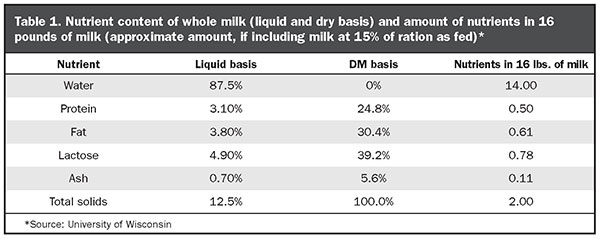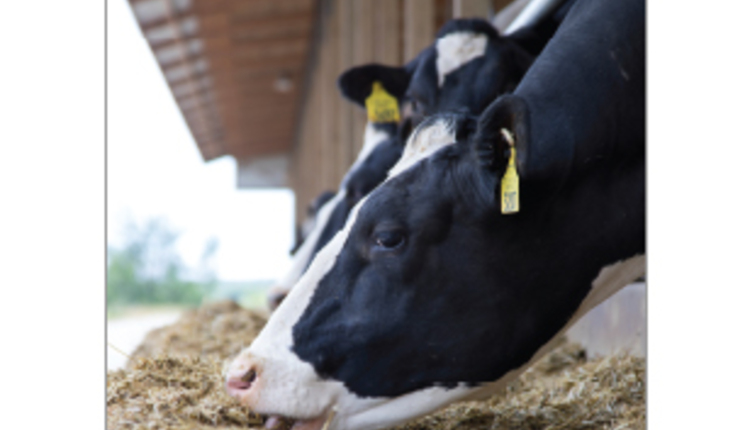Covid-19 has turned the dairy industry upside down, threatening the health of family and labor resources, milk prices, and available markets for milk. Milk dumping will factor into milk prices received by dairy farmers, as well. As this develops, milk processors may ask or require your farm to produce less milk and only pay you for a percent of milk sales (for example, 80% to 90% of your current base).
When this has happened on occasion in the past, these requests have been short-lived (several days), but this challenge will likely not be short-lived (three months, for example). Is your herd ready to respond?
Several on-farm options for lowering milk production are outlined below. Ones we strongly recommend are denoted in green, options recommended if feasible are indicated in orange, and those we recommend avoiding are in red. Stay safe and healthy!

Culling allows for an immediate drop in milk production. Consider individuals with limitations, including higher somatic cell count cows, lame cows, lower-producing cows, low genomic-value cows, cows with long days in milk (even though they may be pregnant), and cows that are months away from calving (even if pregnant). Recommended.

Extending the dry period to 120-plus days before calving will immediately drop milk yield but also allow these cows to remain in the herd for future needs.
In addition to reducing production, this option would lower feed costs per day, as dry cows eat 28 to 30 pounds of dry matter compared to the 40 pounds of dry matter lactating cows consume daily. Further, the costs of dry cow rations are lower per pound of dry matter. Milking time length and labor needs will also drop.
Continue your normal drying off protocol and monitor body condition scores. A low-energy, maintenance dry cow ration should be considered. If possible, put these long-day dry cows in a separate group (could use a pasture area) while monitoring weight. Add more low-quality forage to bulk up the ration, lower nutrient intake, and remove dry cow additives. Recommended.

With this strategy, the lower group may drop in milk yield, and this ration can be adjusted to include more forage. The ration can also be formulated to reduce costs per pound of dry matter, removing feed additives and supplemental protein. This alternative may be more difficult on smaller dairy farms with less flexibility to form groups.
Do not jeopardize fresh and early lactation cows as these cows have the highest feed efficiency, are the most profitable, must become pregnant in a timely fashion, and are at greater health and immunity risks. If these cows drop in milk yield, their entire lactation curve is negatively impacted. We should not give up future lactation persistency through nutrition plane cuts with these cows. Recommended, if feasible.

This allows the herd to manage the milk supply without affecting cows. However, keep in mind that you still incur the cost of producing the milk in this option and then utilize the milk as a relatively expensive nutrient source.
Feeding raw milk to lactating cows provides protein, lactose, and milkfat, meaning we can pull out some protein, starch/sugar, or supplemental fat in the diet. The potential savings can be 30 to 50 cents per cow per day.
Milk protein will degrade in the rumen, so adjust the ration accordingly. The level added may depend on the moisture of the current TMR, as you should avoid a TMR over 55% to 60% moisture. Milk must be fed fresh daily or discarded. Storing milk for more than one day can lead to digestive upsets unless cooled or a preservative is added.
Farms should be mindful of feedbunk cleanliness, feed stability in temperatures over 50°F, and fly management. It’s recommended to include fluid milk at 16 pounds as fed or 2 pounds of dry matter per cow (Table 1).

Shifting heifer calves from milk replacer to fluid milk can be another economic-minded decision, and extending the weaning age to 3 or 4 months old allows for more milk utilization and excellent growth. Bull calves could be fed free-choice milk, with intakes approaching 3% of body weight. A 150-pound bull calf could consume 4.5 pounds of milk dry matter or 30 to 35 pounds of milk. Recommended, if feasible.

By doing so, your farm can lower milk yield 5% to 8%. Advantageously, cow numbers can be maintained and parlor and labor efficiency will be reduced. But it can also stress the mammary glands of high-producing cows, causing milk to leak and leading to higher mastitis risks. Labor needs may be lowered, but the added time must be used efficiently. Shifting part of the herd, such as cull cows and do not breed cows, to 2x could be considered. This strategy could be combined with milking the fresh to peak cows 4x to maintain peak milk potential, labor, and parlor efficiencies. Recommended for lower-producing cows or groups.

If they are available locally, vegetables, expired human food, and waste food can be recycled to dairy cattle. Typically, 2 pounds of dry matter from these sources can be included without affecting cow performance or health. This alternative may not reduce milk yield, but it should lower feed costs and consumers will find it a more responsible use of food waste. Recommended, if feasible.

This may result in a higher price but it does not drop milk yield. Keep in mind that the future beef market and prices are not looking good.
If these identified cull cows have health risks, such as mastitis, there is danger of spreading them to healthy cows. One dairy farmer asked about buying cheap cull cows and feeding these animals to add value; we would not recommend doing this. Not recommended.

Underfeeding protein, energy, and/or other nutrients is a risky decision. Meeting the cows’ requirements, based on their level of milk production and stage of gestation, should be prioritized. Minerals and vitamins are important for animal health and immunity. This strategy is most often considered in low-production groups or late-lactation cows.
If your strategy is to throttle back milk yield in a lower-milk group or cull cow group, adjust energy to meet your goal (weight gain or loss). Lower protein may reduce milk yield, if this is your goal. Pulling feed additives may affect milk yield or lower out-of-pocket costs, but this does place cows at a health risk. Not recommended.










